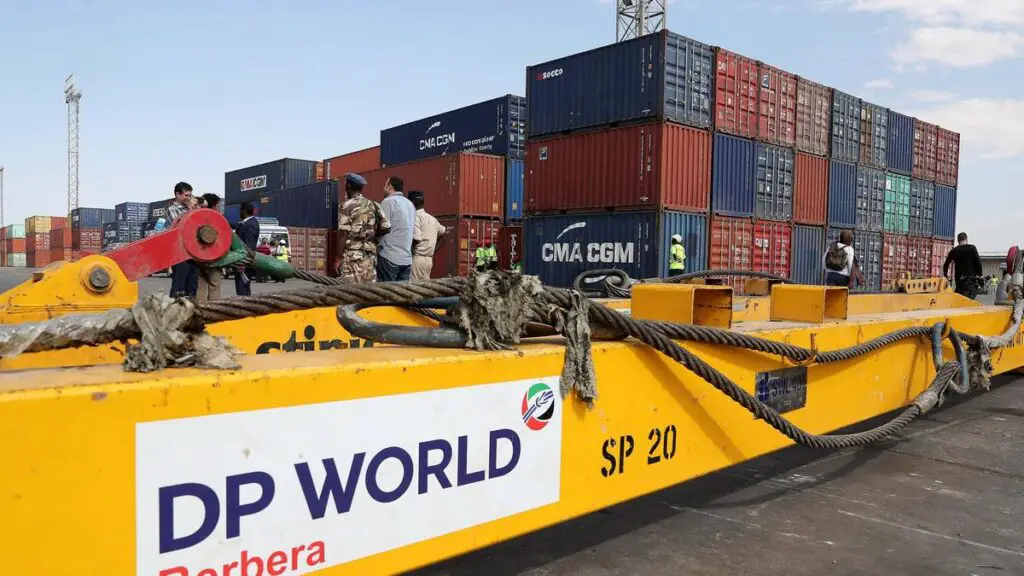Nearly 90 per cent of the world’s trade is carried by the global shipping industry.
Without shipping, global cargo trade via imports and exports would essentially cripple nations and international markets.
The sector was heavily hit by the Covid-pandemic disrupting global supply chains yielding a sharp increase in freight costs.
This came with the partial closure of key ports in China, one of Africa’s leading market sources.
Despite this, data shows China-Africa trade reached $185.2 billion between January and September 2021, up 38.2 percent year-on-year.
As shipping lines suspended operations, many factories followed suit essentially shutting down much of the global international trade.
Following the 2020 global shipment shutdown, another shipping crisis forced goods to be locked down for weeks.
The blockage of the Suez Canal by giant cargo vessel, the 400 meter-long-Ever Given operated by global shipping firm Evergreen, became wedged across the Suez after being blown off course by high winds, preventing the movement of cargo ships across the canal.
It kept more than 450 ships in waiting at the vital water way that provides passage for about 12per cent of global trade.
The 193km-long canal connects the Mediterranean to the Red Sea, providing the shortest sea link between Asia and Europe.
About 30 per cent of vessels that sail in the international waters use the canal.
During this period, international freight charges rose by 20–25 per cent.
While the worst of the supply chain disruptions seen in recent years are easing, including by the Russia-Ukraine war, new challenges are emerging, and others are continuing that may define2023.
They include a slowdown in global trade growth from six per centin2021 and 3.2per cent in 2022 to a projected 2.7 per cent in 2023, as forecasted by the International Monetary Fund.
There is also continued high energy prices which the World Bank says could rise by50per centby2024.
Weather events such as hurricanes, floods, and droughts are also expected to affect the global supply chains.
“While preparing for everything is next to impossible, companies can boost the resilience of their supply chains, so they are ready for anything 2023 might bring,” global shipping company Maersk indicated.
Nevertheless, the shipping industry is expected to remain resilient where according to the Shippers Council of Eastern Africa (SCEA), the “global shipping trends are now responsive.
”With increased capacity on vessels and with ports expanding to handle post Panamax vessels(6000-18000)TEUs, capacity rates are expected to fall. However there is more focus on green logistics and use of eco-friendly fuels to power vessels.“ The rush for carbon credits in logistics is real. Lines are taking more interest in inland logistics for end to end logistics especially on fresh produce exports,” SCEA chief executive GilbertLangat told the Exchange.
In East Africa and more closely Mombasa, there is a move to utilize the sea freight for flowers, manors, avocado and fresh vegetable exports to Europe with support from the EU.
The current utilization of refer points at the port is less than 10 per cent capacity.
“The industry focus is to have 30 per cent fresh produce exports by 2030. With exports, then our import rates and volumes will be positively affected,” Langat says.
How AFCFTA will dominate the East African waters
Freight costs are expected to come down as larger shipping lines are deployed to regions such as East Africa.
After re-opening of economies in post-Covid period, there was increased demand for trade between Europe and Asia.
This saw most shipping lines moved to bridge the gap with concentration on the two markets.
The pressure has however eased, industry trends show, with larger carriers now going to other smaller markets.
There is expected stable trade between African and key international markets going into 2023,with the shipping industry continuing to play its critical role.
In the continent, the industry will be instrumental in driving the African Continental Free Trade Area pact where Ghana, Cameroon, Egypt, Rwanda, Tanzania and Kenya are the six countries piloting the agreement as countries work on pending issues on preferential Rules of Origin on sensitive goods, which account for seven per cent of the tariff lines.
The stalemate is on textiles and apparels, sugar and sugar products, goods produced in Special Economic Zones (SEZs), edible oils and motor vehicles.
Member states have however agreed on 88.7 per cent tariff lines of about 6,000 products, open for trade on preferential terms, the majority of which will be moved by sea.
To date, 54 African Union (AU) member states have signed the AfCFTA agreement with 49 having ratified it, making them eligible to trade.
The shipping industry is expected to boost Africa’s trade to the world while expanding intra-Africa trade with the AfCFTA creating a large single market.
This is on the over1.2 billion people population and a combined GDP of about USD 2.5 trillion.
The industry will be key in boosting Africa’s share of the total global trade which remains low at2.8 per cent.
Experts have however warned of possible market volatility in the year in the container shipping industry.
With a significant oversupply, a further influx of more TEUs in 2023 is expected with shipping lines seen to reduce vessel capacity and suspend services by considerable blank sailings, US’s GlobalTradeplatformnotes.
In a recent advisory, Maersk indicated it will continue to “make capacity adjustments on services from Asia to North America, Europe and the Mediterranean to better align with demand fluctuations.”
The overall impact however is lower freight charges which have been easing costs on imports and exports, where for instance shipping container prices for routes between China and northern Europe began their decline in January.
If energy prices continue to remain high, this number could impact trade into Africa significantly, thereby causing even more inflationary pressure.
Nevertheless, it is the global shipping lines today that seem to hold the upper hand and be the deterministic power dictating how expensive goods can be in Africa.
